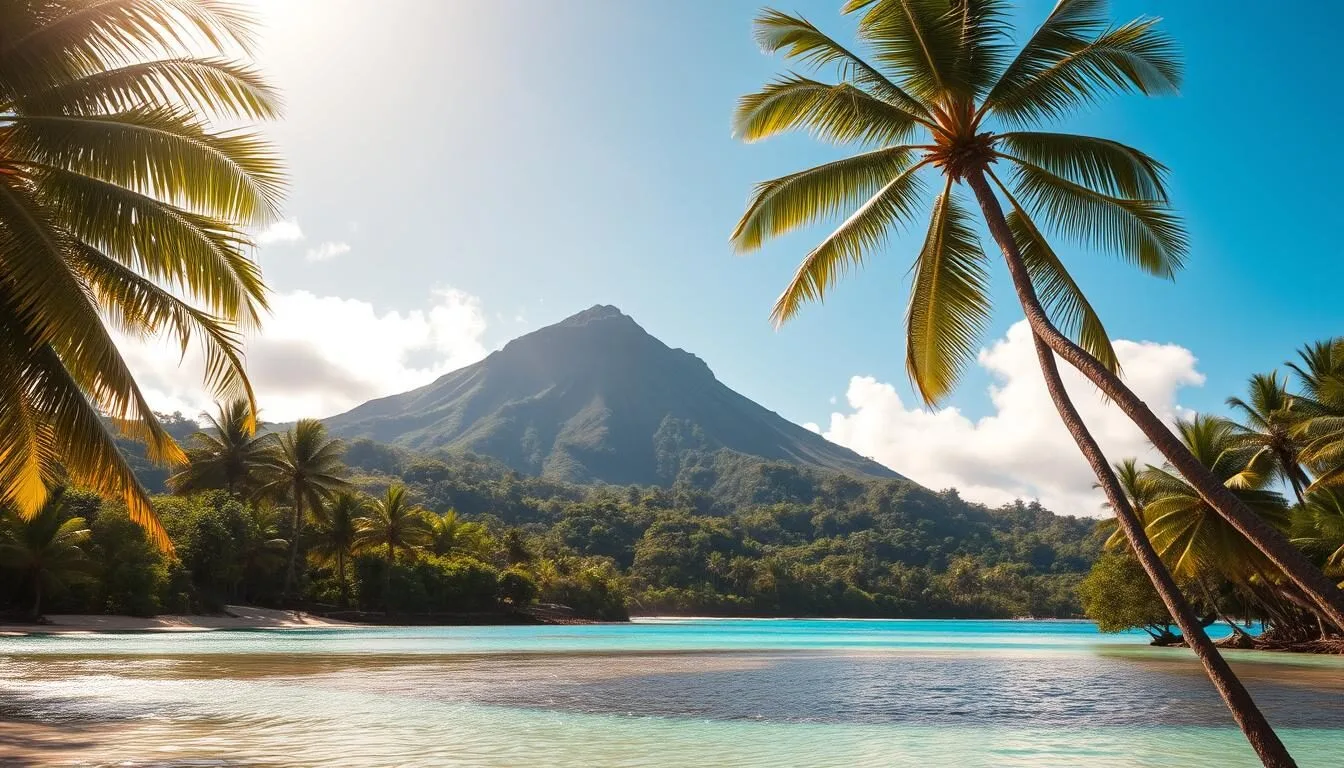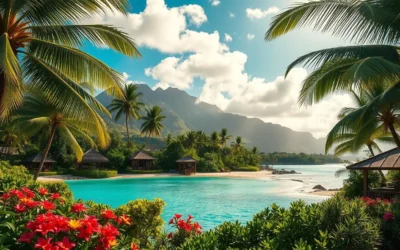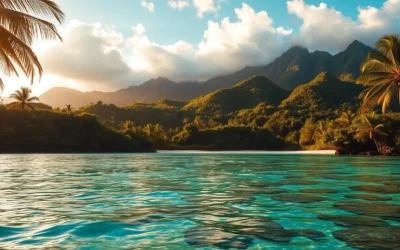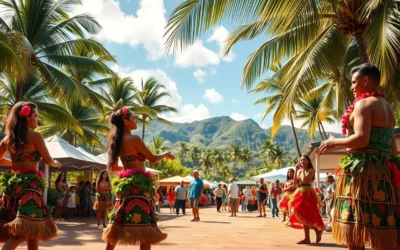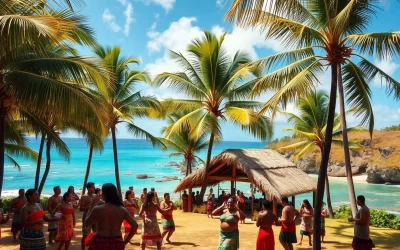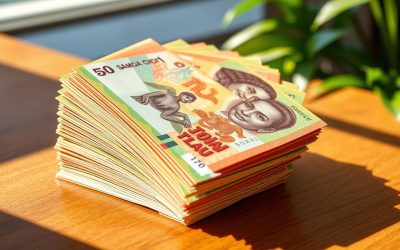✓ Accommodations✓ Flights✓ Rental Cars✓ Tours & Activities
Did you know that Samoa’s tropical climate is characterized by two distinct seasons that can make or break your island getaway? Understanding the weather patterns is crucial when planning your trip to this Pacific paradise.
As you prepare for your adventure, this comprehensive guide will walk you through the optimal times to visit Samoa, ensuring that you make the most of your tropical vacation. You’ll discover the best time to enjoy activities like beach relaxation, hiking, and water sports, based on the island’s unique weather patterns and tropical climate.
By the end of this guide, you’ll be equipped with the knowledge needed to choose the perfect time for your Samoa adventure, ensuring a memorable and enjoyable experience.
Understanding Samoa’s Tropical Climate
The island nation of Samoa boasts a tropical climate with consistently warm temperatures and high humidity. This climate is influenced by its geographic location and results in relatively stable weather patterns throughout the year.
Geographic Location and Its Impact on Weather
Samoa’s location in the Pacific Ocean, near the equator, contributes to its tropical climate. The country’s geography, with its islands and coastal areas, also plays a significant role in shaping its weather. Coastal regions tend to benefit from cooling sea breezes, making them more comfortable than inland areas during the hottest parts of the day.
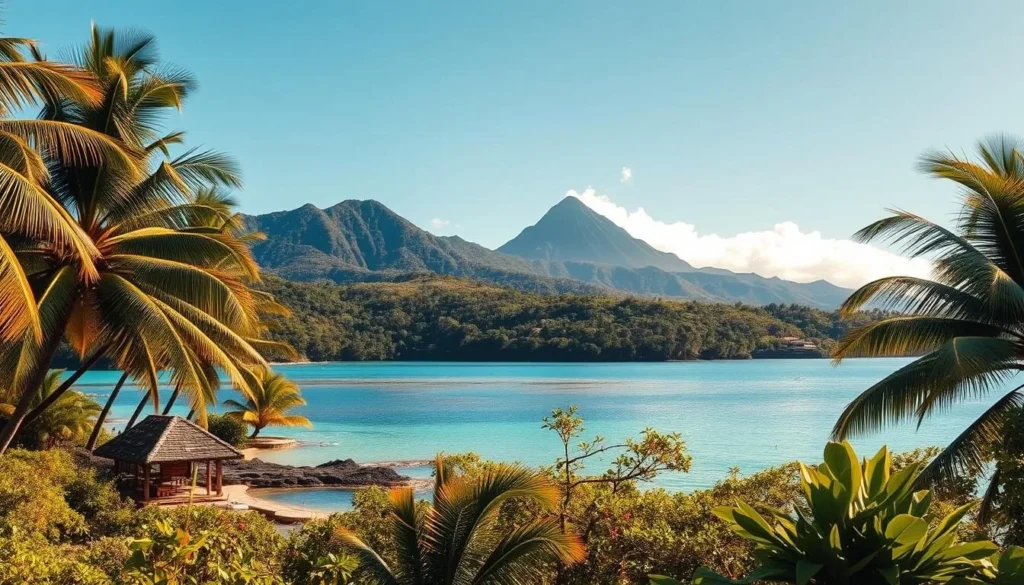
Year-Round Temperature Patterns
Samoa enjoys warm temperatures throughout the year, with average highs between 84-88°F (29-31°C) and lows rarely below 73°F (23°C). The minimal temperature variation means you can pack light, regardless of the time of year you visit. Humidity levels remain high, typically between 70-90%, which can make the temperature feel warmer than it actually is.
| Temperature Range | Fahrenheit | Celsius |
|---|---|---|
| Average High | 84-88°F | 29-31°C |
| Average Low | 73°F | 23°C |
| Humidity Levels | 70-90% |
Samoa’s Two Distinct Seasons
Understanding Samoa’s two distinct seasons is crucial for planning a weather-savvy trip. Samoa’s climate is characterized by two main periods: the dry season and the wet season.
The Dry Season: May to October
The dry season in Samoa, spanning from May to October, is marked by lower humidity levels and reduced rainfall, making it an ideal time for outdoor activities. During this period, you can enjoy Samoa’s beautiful landscapes and participate in various activities without the hindrance of frequent rain showers.
Here’s a comparison of the dry and wet seasons:
| Characteristics | Dry Season | Wet Season |
|---|---|---|
| Humidity Levels | Lower | Higher |
| Rainfall | Reduced | Frequent |
| Outdoor Activities | Ideal | Possible with planning |
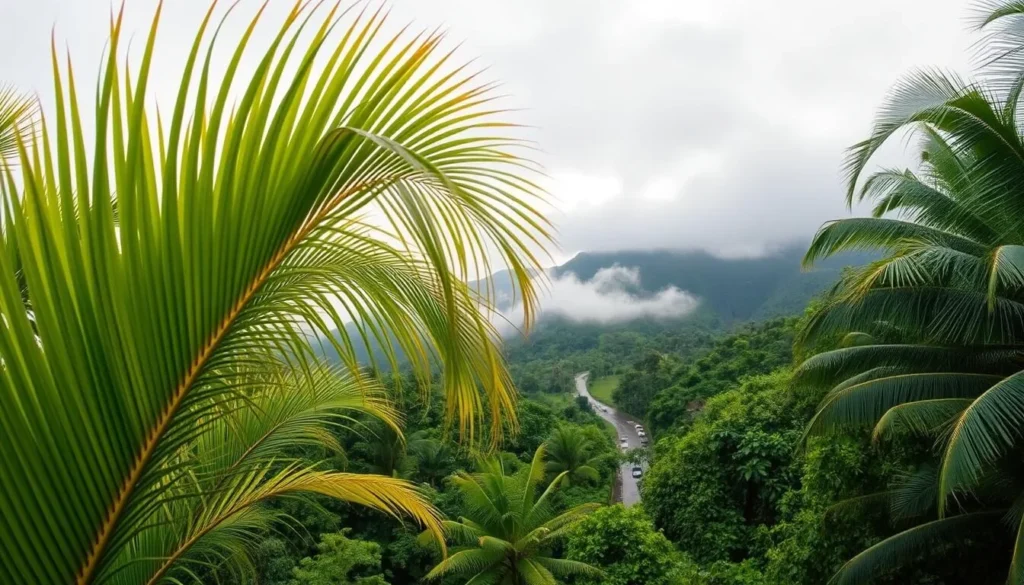
The Wet Season: November to April
From November to April, Samoa experiences its wet season, characterized by higher humidity levels and frequent rain showers that typically occur in the afternoons. Despite the rain, you’ll still enjoy plenty of sunshine as rain showers are often intense but brief.
- The wet season coincides with Samoa’s summer, with daytime temperatures averaging around 86-88°F (30-31°C), feeling hotter due to increased humidity.
- This period brings lush, vibrant landscapes as the increased rainfall nourishes Samoa’s tropical vegetation, creating spectacular scenery for photography enthusiasts.
While the wet season is also cyclone season in the South Pacific, with the highest risk period being January through March, direct hits on Samoa are relatively rare. With flexible planning, many outdoor activities remain possible, and you’ll benefit from lower tourist numbers and reduced prices on accommodations and tours.
Rainfall Patterns Throughout the Year
Samoa’s rainfall patterns vary significantly throughout the year, influencing the best times to visit. The country’s tropical climate means that rainfall is a significant factor in determining the suitability of various activities and excursions.
Wettest Months: December to March
The wettest months in Samoa are from December to March, with these months experiencing the most substantial rainfall. This period is characterized by frequent downpours and higher humidity, making some outdoor activities more challenging. However, the lush landscapes that result from the rainfall can be particularly beautiful during this time.
Driest Months: June to September
The dry season in Samoa, which spans from June to September, is marked by less rainfall and more consistent weather. July and August are typically the driest months, receiving about 3-4 inches (75-100mm) of rainfall. These conditions are making ideal circumstances for outdoor activities like hiking and exploring natural attractions. The reduced rainfall, combined with slightly cooler temperatures averaging around 84°F (29°C), creates comfortable conditions for visiting places like the O Le Pupu Pu’e National Park or the lava fields of Savai’i. These months are considered the best months for enjoying Samoa’s outdoors.
During the dry season, you can enjoy more consistent weather, with clear skies and sunshine. The drier conditions also mean less humidity, providing more comfortable sleeping conditions, especially in accommodations without air conditioning. While these months offer the most predictable weather, they also represent high season in Samoa, so it’s recommended to book accommodations and tours in advance.
Monthly Weather Breakdown in Samoa
To make the most of your visit to Samoa, it’s essential to grasp the country’s monthly weather fluctuations. This breakdown will help you understand the best times to visit and plan your activities accordingly.
January to March: Peak Wet Season
During these months, Samoa experiences its peak wet season, with frequent rainfall and high humidity. You can expect heavy downpours, but the rain often comes in short bursts, leaving plenty of sunshine. Average temperatures range from 86-88°F (30-31°C), making it ideal for those who enjoy warmer weather.
April to June: Transition to Dry
As the wet season subsides, April to June marks a transition period towards drier conditions. You can expect fewer rainy days and a decrease in humidity. Temperatures remain pleasant, ranging from 84-86°F (29-30°C), making it an excellent time for outdoor activities like hiking and exploring.
July to September: Peak Dry Season
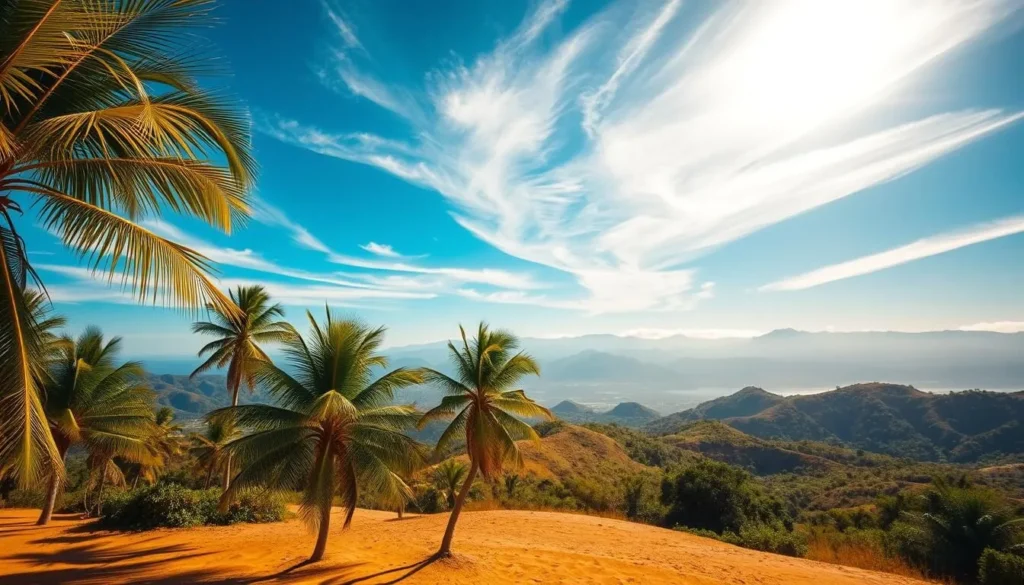 dry season and is widely considered among the best months to visit. You’ll experience the lowest rainfall of the year, with monthly averages of just 3-4 inches (75-100mm), mostly in brief, light showers. These months offer the most reliable weather for planning outdoor activities, with consistent sunshine and clear skies on most days. Average temperatures during this period are around 82-84°F (28-29°C), which is slightly cooler than the wet season but still pleasantly warm.
dry season and is widely considered among the best months to visit. You’ll experience the lowest rainfall of the year, with monthly averages of just 3-4 inches (75-100mm), mostly in brief, light showers. These months offer the most reliable weather for planning outdoor activities, with consistent sunshine and clear skies on most days. Average temperatures during this period are around 82-84°F (28-29°C), which is slightly cooler than the wet season but still pleasantly warm.
- The trade winds are most consistent during these months, providing natural cooling that makes exploring comfortable despite the tropical latitude.
- July and August coincide with school holidays in Australia and New Zealand, making this a busier and more expensive time to visit as many families from these countries vacation in Samoa.
Best Months for Beach Activities
The best time to visit Samoa for beach activities depends on what you’re looking for. Whether you’re interested in swimming, snorkeling, or surfing, Samoa’s tropical climate offers something for everyone.
Water Temperature Year-Round
Samoa’s water temperature remains relatively consistent throughout the year, ranging from 28°C to 30°C (82°F to 86°F). This makes it ideal for water activities year-round. The warm waters are perfect for swimming, snorkeling, and diving, allowing you to enjoy the rich marine life without worrying about cold temperatures.
Optimal Months for Swimming and Snorkeling
For swimming and snorkeling, the dry season from May to October is considered optimal due to clearer waters and calmer conditions. During this period, you can enjoy the best visibility for snorkeling and diving, exploring Samoa’s vibrant coral reefs and marine life.
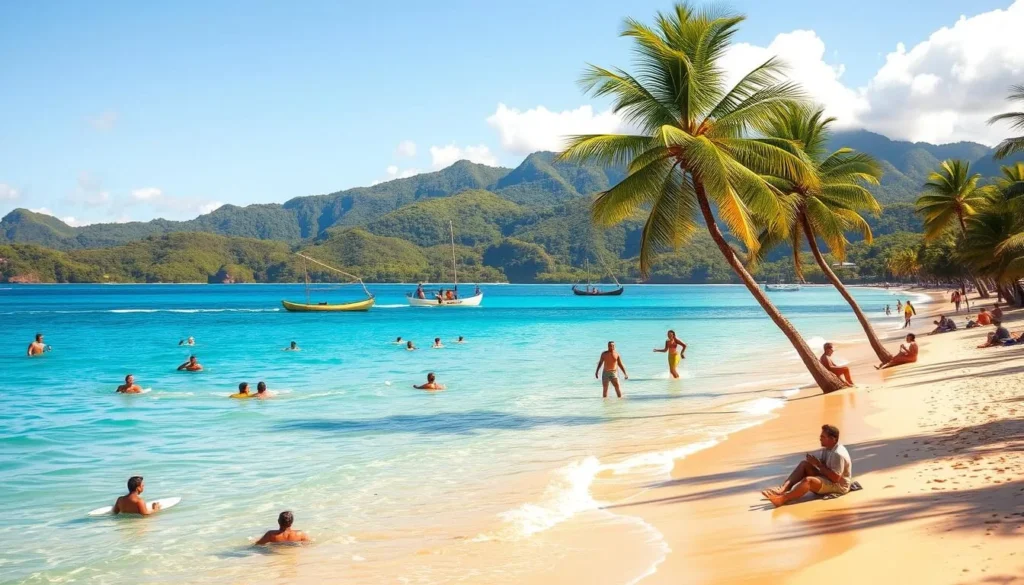
Best Time for Surfing
For surfers, the best time is during the wet season from November to April. Consistent swells create ideal wave conditions, especially on the south coasts of Upolu and Savai’i. Experienced surfers will find the prime months to be January through March, when the largest swells coincide with offshore winds. Beginners might prefer the shoulder months of November, December, or April for less powerful waves.
Unlike other beach activities, surfing in Samoa is actually better during the wet season, making it a great activity if you’re visiting during this time.
Samoa: Best Months for a Weather-Savvy Trip
When planning a trip to Samoa, understanding the best months to visit is crucial for a weather-savvy traveler. Samoa’s climate is characterized by two distinct seasons, making it essential to choose the right time for your activities and preferences.
May to October: The Prime Visiting Window
The dry season, from May to October, is considered the prime visiting window for Samoa. During these months, you can expect minimal rainfall and stable weather conditions, ideal for beach activities and outdoor adventures. The dry season is the peak tourist season, with July and August being the busiest months.
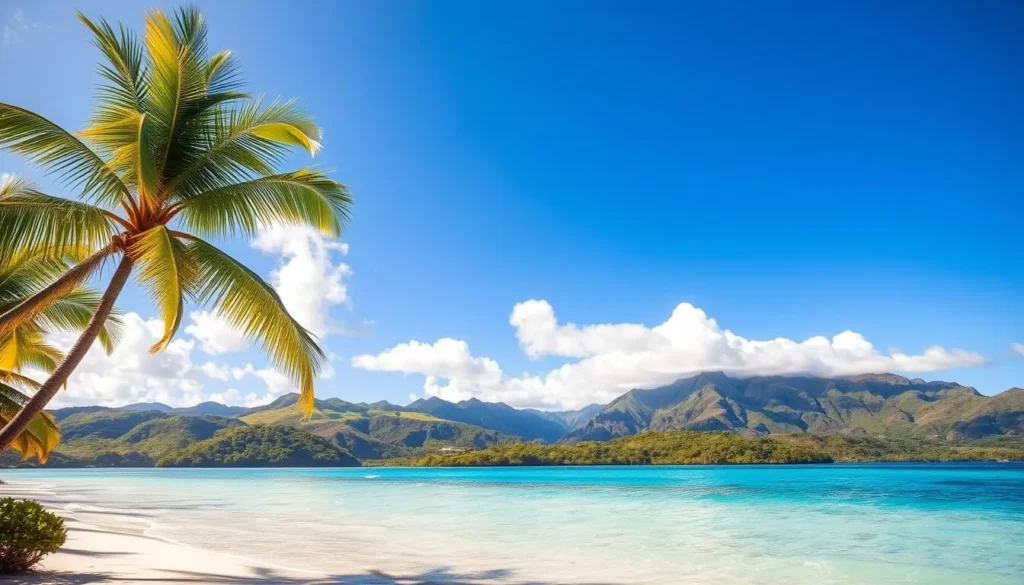
| Month | Average Temperature | Average Rainfall |
|---|---|---|
| May | 28°C | 100 mm |
| June | 27°C | 60 mm |
| July | 27°C | 40 mm |
| August | 27°C | 50 mm |
| September | 28°C | 70 mm |
| October | 29°C | 100 mm |
Shoulder Seasons: April and November
For travelers looking for a compromise between weather and tourist numbers, April and November are considered shoulder seasons. April is transitioning from wet to dry, with decreasing rainfall and increasingly stable weather, while November marks the beginning of the wet season with occasional afternoon showers. These periods offer a more authentic experience of Samoa with fewer tourists and lower rates for accommodations and tours.
- April offers lush landscapes and favorable weather conditions.
- November starts with conditions similar to October but sees increasing rainfall.
- Both months are ideal for budget-conscious travelers.
Best Months for Outdoor Adventures
Whether you’re an avid hiker or a water sports enthusiast, Samoa’s climate plays a significant role in determining the best time for your outdoor activities. The island’s diverse landscapes and marine environments offer a range of experiences that are best enjoyed during specific periods of the year.
Hiking and Land Exploration
For those who enjoy hiking and exploring Samoa’s lush interiors, the dry season from May to October is generally considered the best time. During these months, the weather is drier, making trails more accessible and reducing the risk of landslides. Early morning hikes are particularly recommended as the temperatures are cooler, and the chances of rain are lower.
- The dry months offer clearer skies, making it ideal for spotting Samoa’s unique bird species and enjoying the scenic views.
- Guided tours are available year-round, but the dry season provides the most comfortable conditions for both guides and hikers.
Water Sports and Marine Activities
Samoa’s waters are perfect for a variety of water sports, including snorkeling, diving, and surfing. The dry season, from June to September, is best for most water activities due to the calm sea conditions and excellent visibility. For surfers, the wet season, particularly February and March, offers the largest swells.
- July and August are ideal for boat trips and marine excursions due to the calm seas and minimal risk of weather-related cancellations.
- Fishing enthusiasts may prefer the transitional months of April-May and October-November when certain pelagic species are more active.
- Regardless of when you visit, early morning water activities generally offer the best conditions.
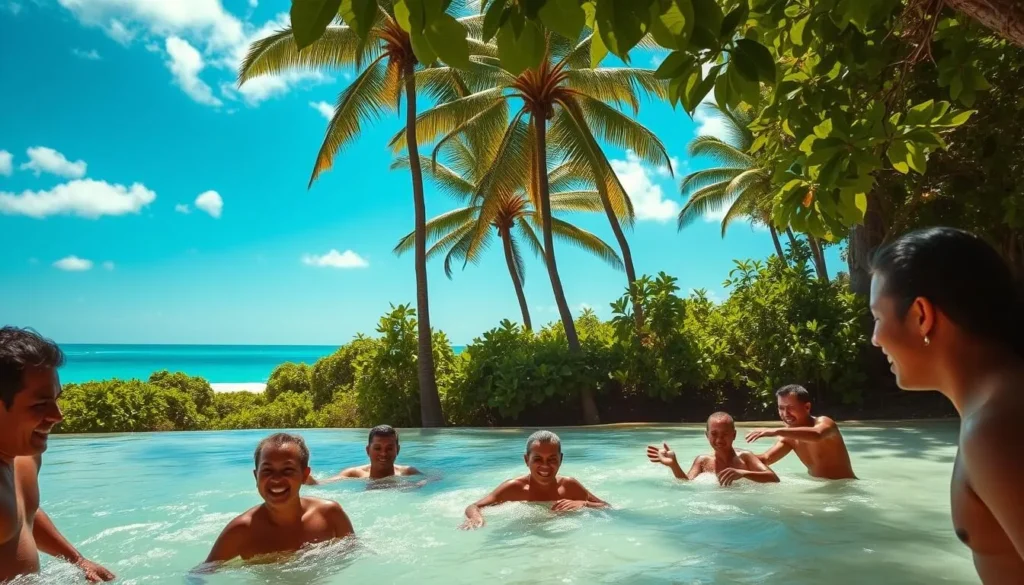
Sunshine and Cloud Cover by Month
Samoa’s sunshine and cloud cover vary significantly throughout the year, making some months more ideal for certain activities. The island’s tropical climate means that the amount of sunshine and cloud cover can greatly impact your experience.
Clearest Skies: June to September
From June to September, Samoa enjoys its clearest skies, making these months perfect for outdoor activities like snorkeling, diving, and hiking. During this period, you can expect an average of 8-9 hours of sunshine per day. The dry season brings minimal cloud cover, allowing for unobstructed views of the stunning landscapes. These months are ideal for photography, with clear skies providing optimal light conditions.
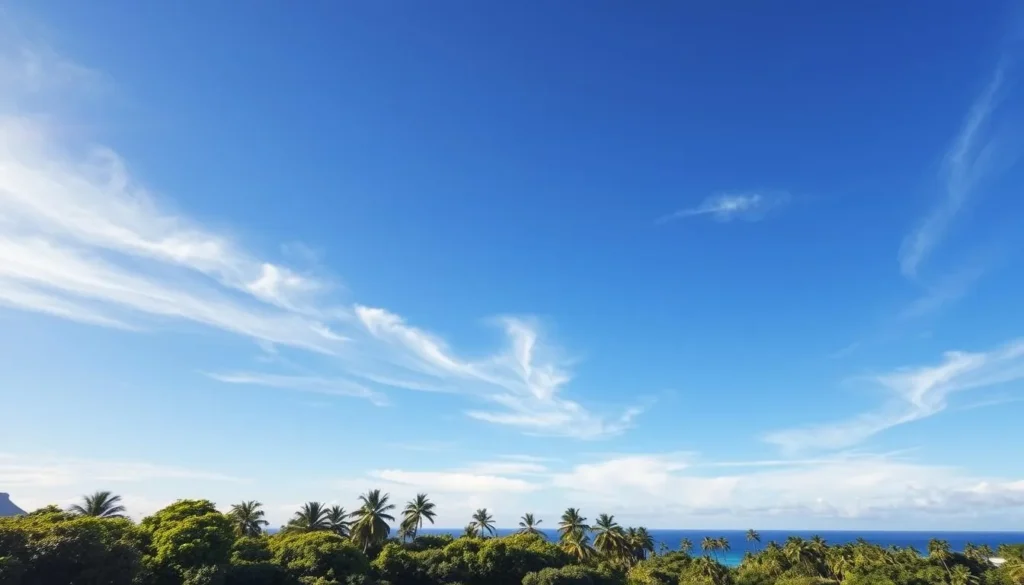
Overcast Periods: December to March
December to March represents Samoa’s most overcast period, coinciding with the peak of the wet season. During these months, you can still experience an average of 5-6 hours of sunshine per day. January typically sees the most cloud cover, with completely clear days being relatively rare and afternoon thunderstorms common. Despite the increased cloudiness, these months can still offer beautiful weather conditions for photography, with dramatic skies and stunning light quality after rain showers. The increased cloud cover during this period offers some natural relief from the heat.
Wind Conditions and Their Seasonal Variations
As you plan your trip to Samoa, it’s essential to consider the wind conditions and their seasonal variations to ensure a comfortable and enjoyable journey.
Comfort and Trade Winds
The trade winds in Samoa have a significant impact on the comfort level of visitors. These winds are generally moderate, blowing at speeds of up to 25 miles per hour. During the dry season, from May to October, the trade winds contribute to pleasant weather conditions, making it an ideal time for outdoor activities. The consistent breeze can make temperatures feel more comfortable, especially during the warmer months.
Cyclone Season Considerations
Samoa’s cyclone season, which runs from November to April, is a period of heightened risk for severe weather conditions. During this time, wind conditions can become extreme, with winds exceeding 74 miles per hour, characteristic of hurricane-strength storms. It’s crucial to be aware of the cyclone risk, especially if you’re planning to visit during the wet season. While direct hits are infrequent, occurring approximately once every 4-5 years, nearby cyclones can still impact your travel plans with increased rainfall and stronger winds.
- Cyclone season officially runs from November through April, with the highest risk being January through March.
- Consider travel insurance that covers weather-related disruptions if you’re visiting during cyclone season.
- Stay informed about weather forecasts during your trip to adjust your plans accordingly.
Modern forecasting provides several days’ warning before a potential cyclone, and Samoa has well-established procedures in place for visitor safety.
Cultural Events and Festivals by Season
Samoa’s cultural calendar is filled with vibrant events and festivals that reflect the country’s rich heritage. The islands celebrate various cultural events throughout the year, offering visitors a unique glimpse into Samoan traditions.
Dry Season Celebrations
During the dry season, Samoa hosts several cultural events that showcase its rich cultural heritage. The Teuila Festival, typically held in September, is a highlight, featuring traditional dance, music, and handicrafts. This festival is a great opportunity to experience the best things about Samoan culture.
| Event | Month | Description |
|---|---|---|
| Teuila Festival | September | Celebration of Samoan culture with traditional dance, music, and handicrafts |
| White Sunday | October (sometimes early November) | Honoring Samoan children with special church services, feasts, and performances |
Wet Season Festivities
The wet season, from November to April, features several unique cultural celebrations that make this a rewarding time visit. December and January are filled with Christmas and New Year celebrations, blending Christian traditions with Samoan customs. February march offer the opportunity to experience White Sunday, when Samoan children are honored. The wet season is also when many villages hold their annual fono (council meetings) and fa’alavelave (ceremonial gift exchanges), providing insights into authentic Samoan governance and social structures.
Practical Travel Tips for Weather-Savvy Visitors
Making the most of your Samoa trip requires some knowledge of the local weather patterns and tips for visitors. Being prepared can significantly enhance your travel experience.
What to Pack by Season
Understanding Samoa’s two distinct seasons is key to packing appropriately. During the wet season (November-April), it’s wise to include items that can protect you from rain showers. Lightweight rain gear and quick-drying clothing are essentials.
- Include waterproof bags or covers for your belongings.
- Choose clothing that dries quickly to ensure comfort.
Transportation Considerations
When planning your transportation, consider the season and potential weather impacts. During the wet season, some roads may be more challenging to navigate. Researching your options and understanding the local conditions can help you make making ideal choices for your travel within Samoa.
Accommodation Recommendations
For visitors, choosing the right accommodation can greatly impact your comfort. Consider booking places with amenities like ceiling fans or air conditioning, especially if you’re sensitive to heat and humidity. Spending part of your stay in the highlands can also be a refreshing day trip or stay.
Conclusion: Planning Your Perfect Samoa Trip
The beauty of Samoa is undeniable, but the best time to experience it depends on your preferences and priorities. When planning your trip to Samoa, consider that the best time to visit for most travelers is during the dry season from May through October.
This comprehensive guide has walked you through Samoa’s seasonal variations to help you choose the months that best align with your preferred activities and comfort preferences. Samoa offers unique experiences year-round; the dry season provides reliable weather for outdoor adventures, while the wet season brings lush landscapes and fewer visitors.
Regardless of when you visit, you’ll experience the warm hospitality of Samoan culture, a rich history dating back over 3,000 years, and natural wonders that make these islands a special corner of the world. With proper preparation and a flexible attitude, every day in Samoa can be amazing.
By considering your priorities and the characteristics of each season, you can make the most of your trip and enjoy the beauty that Samoa has to offer.
The above is subject to change.
Check back often to TRAVEL.COM for the latest travel tips and deals.
